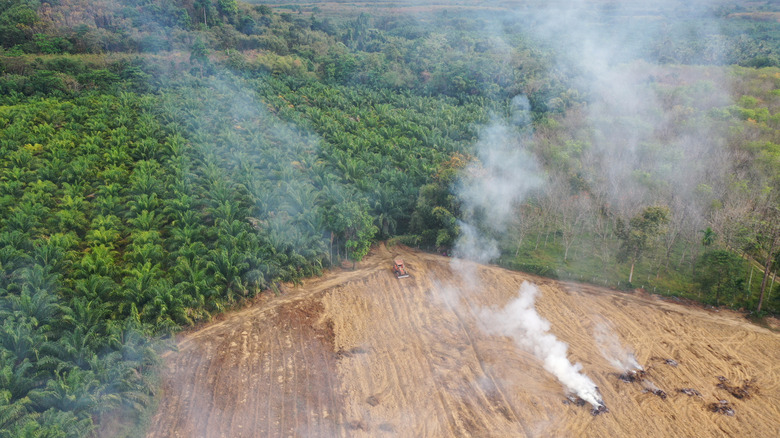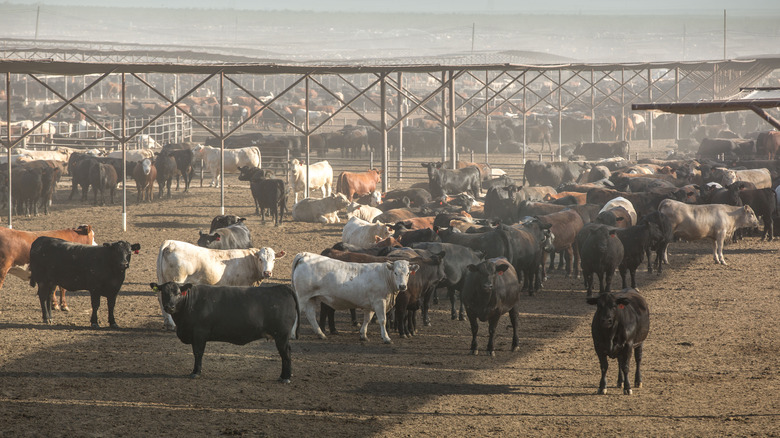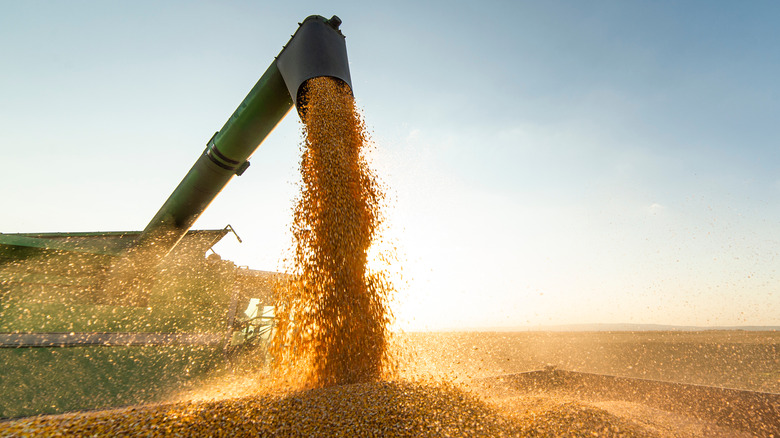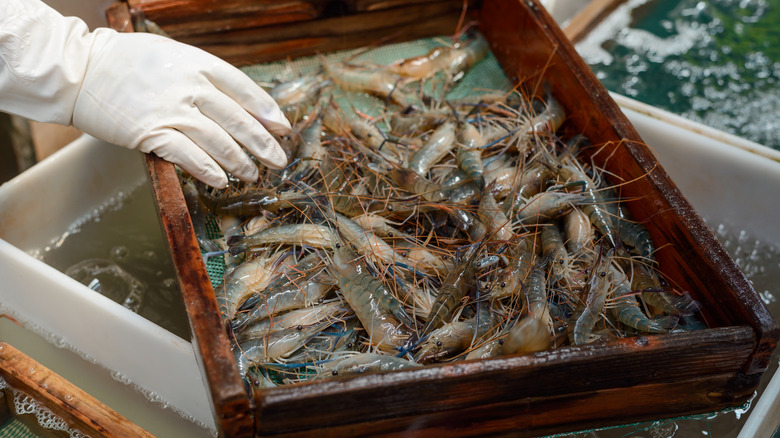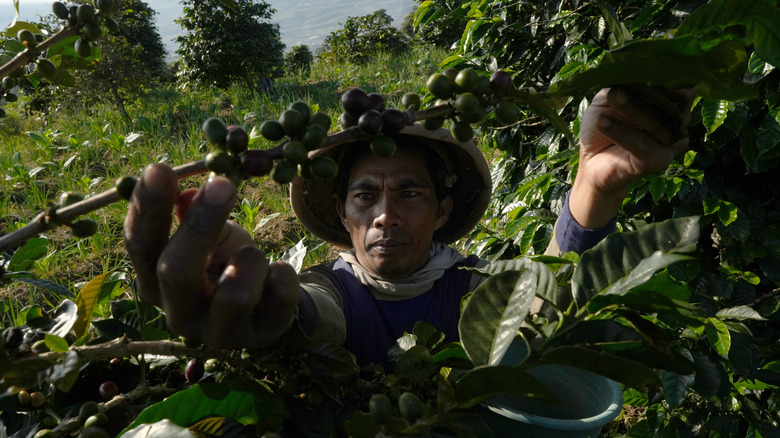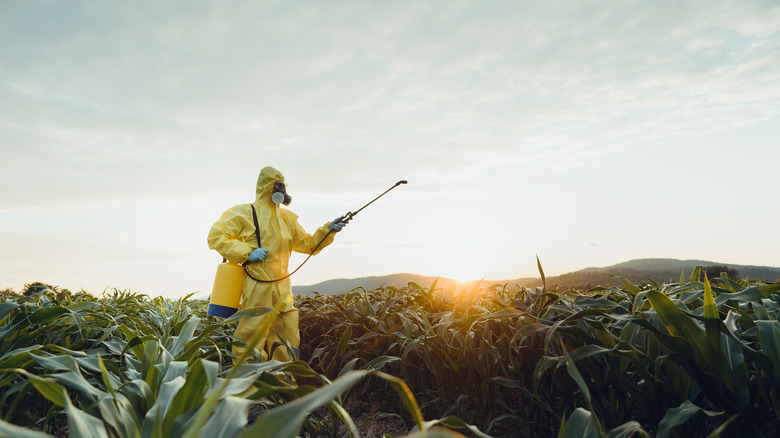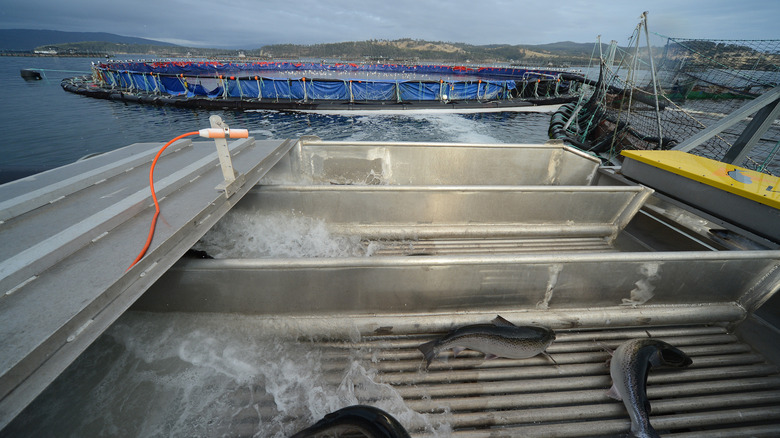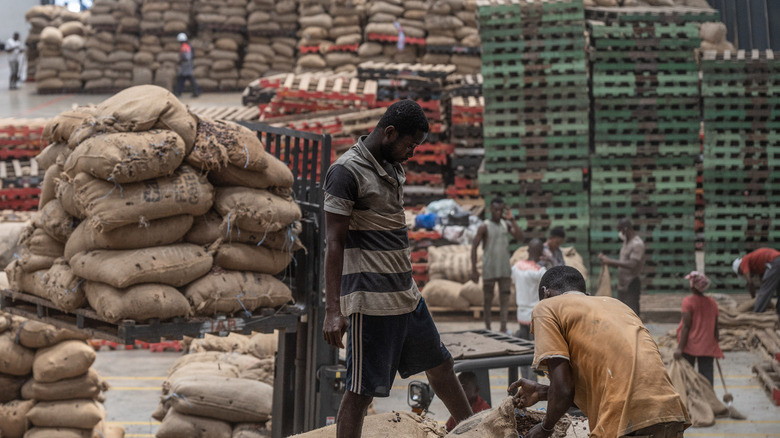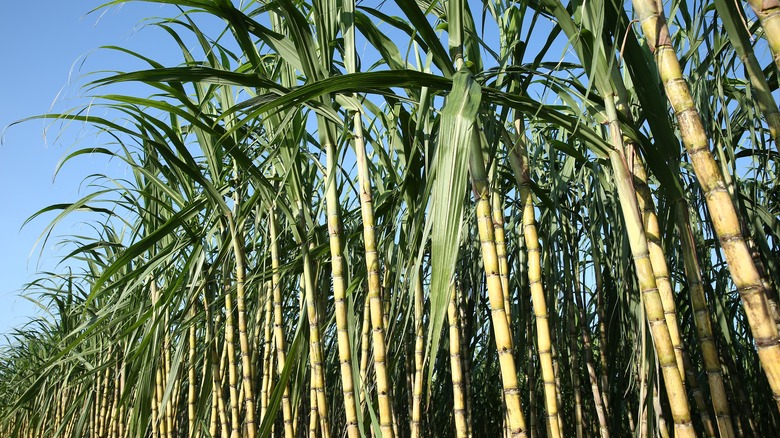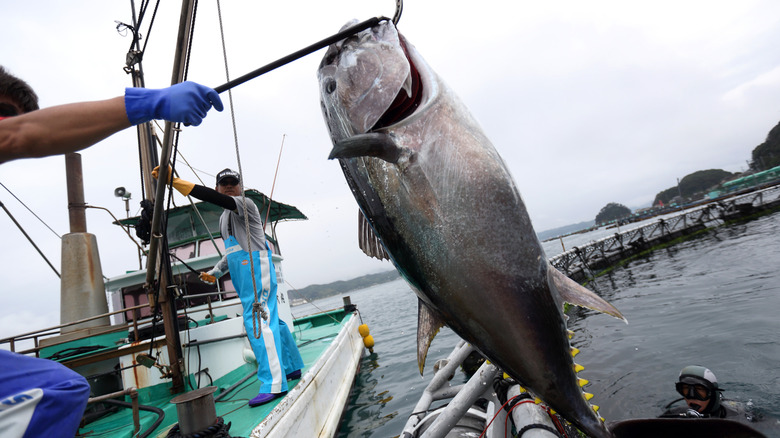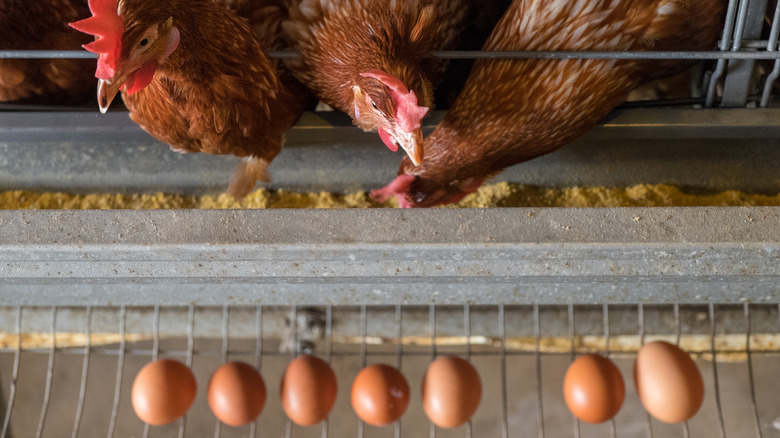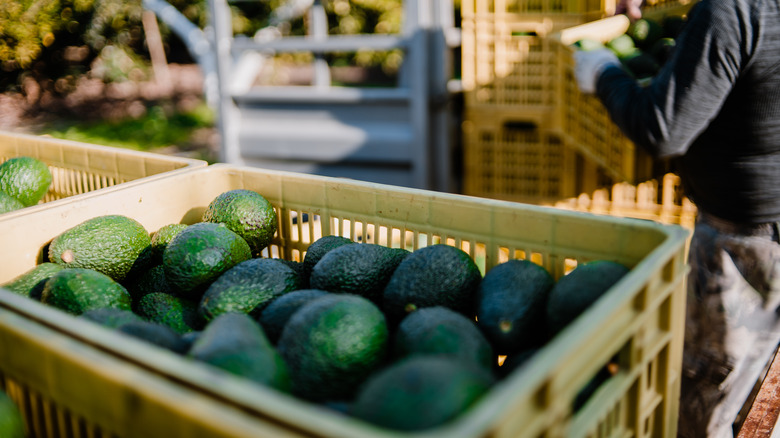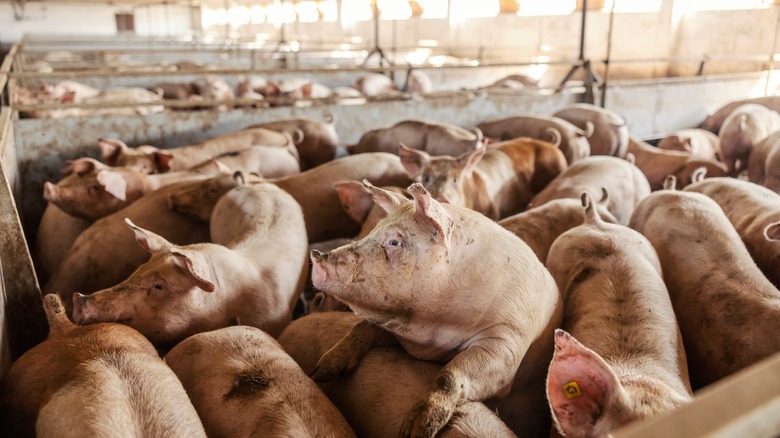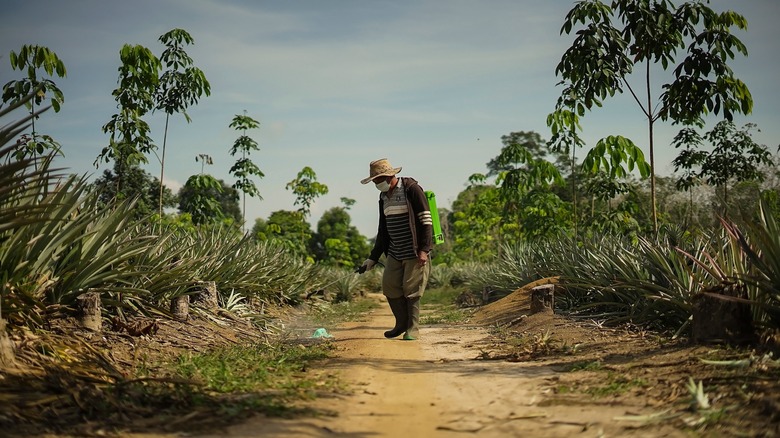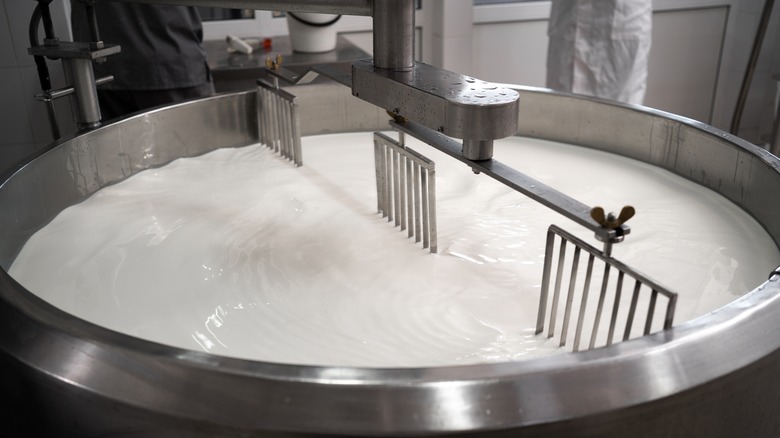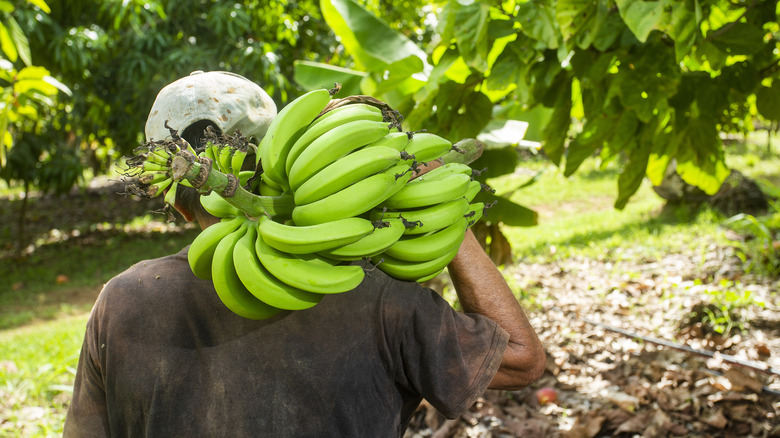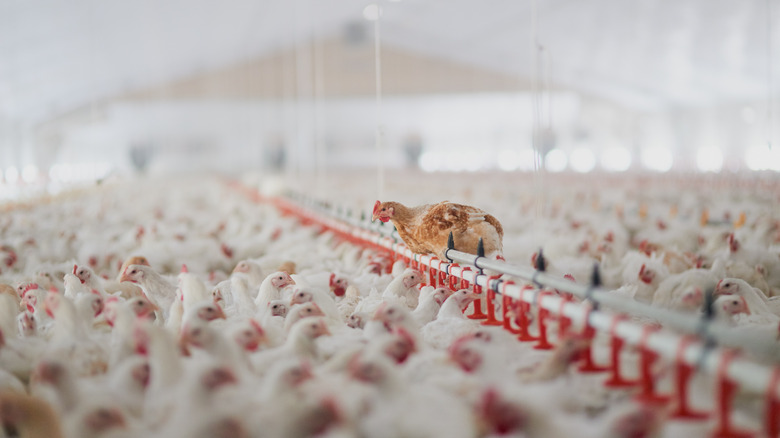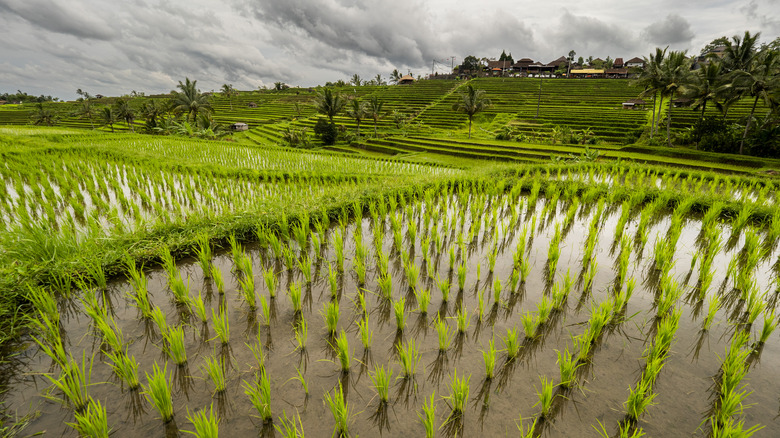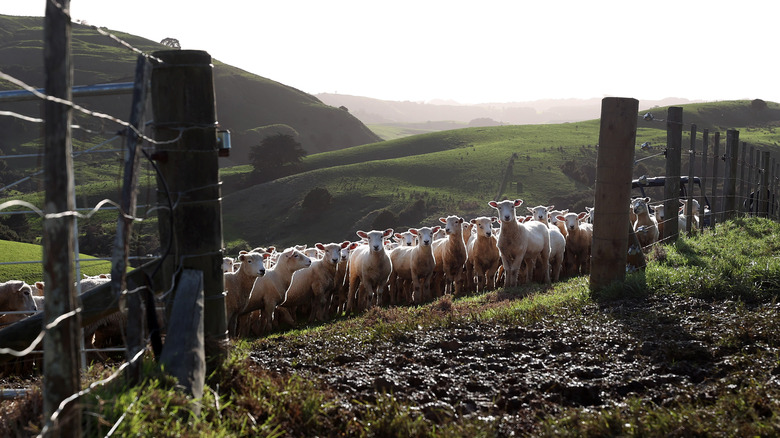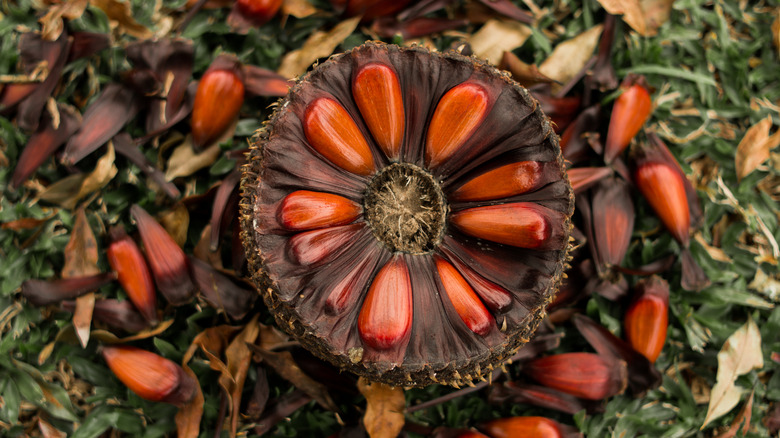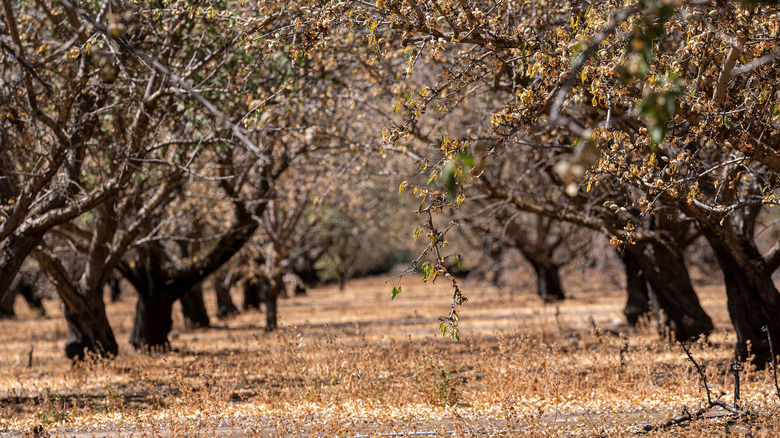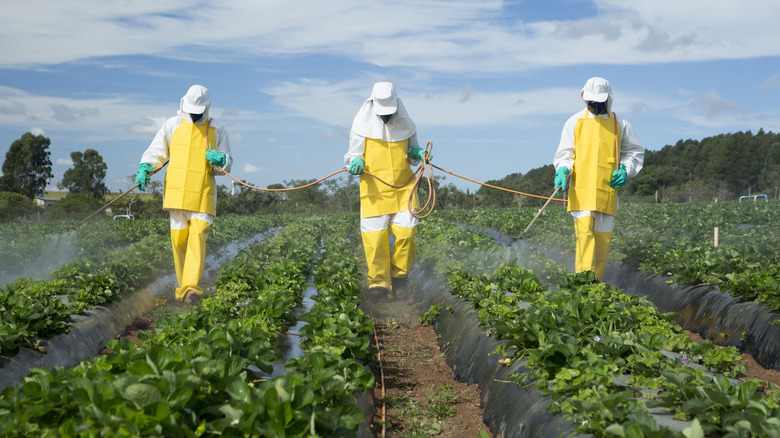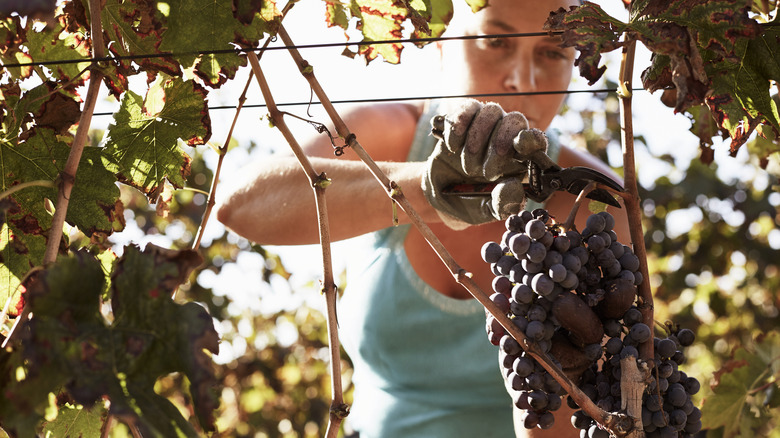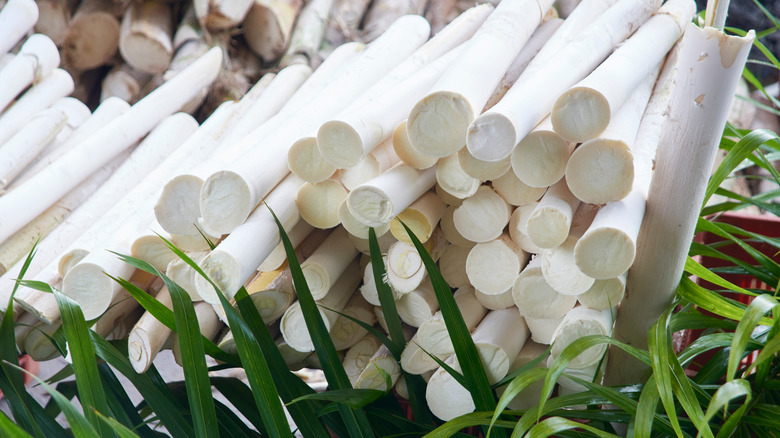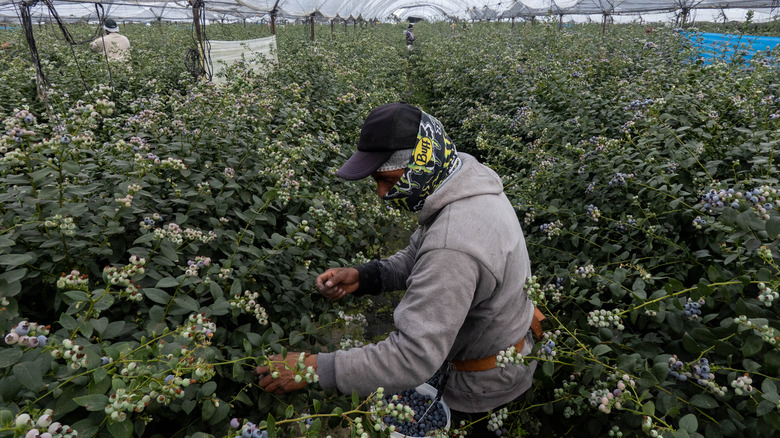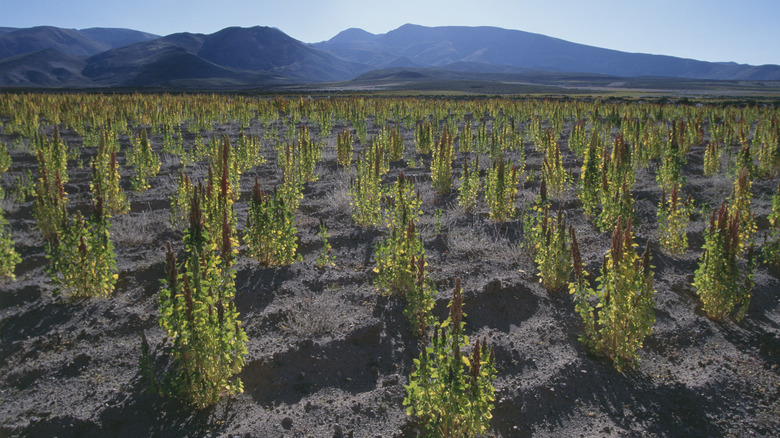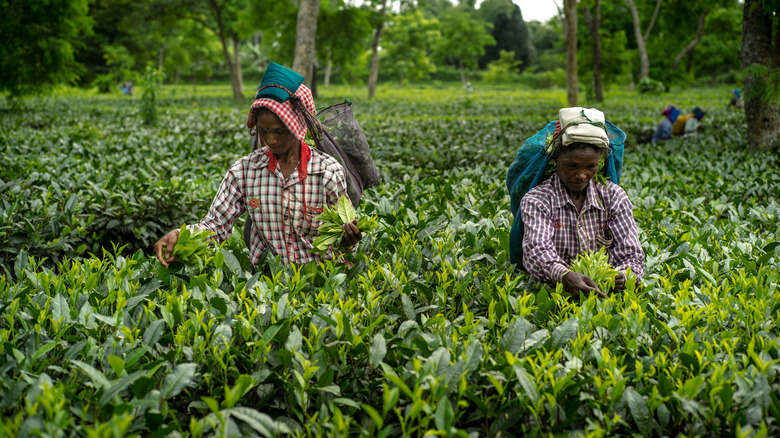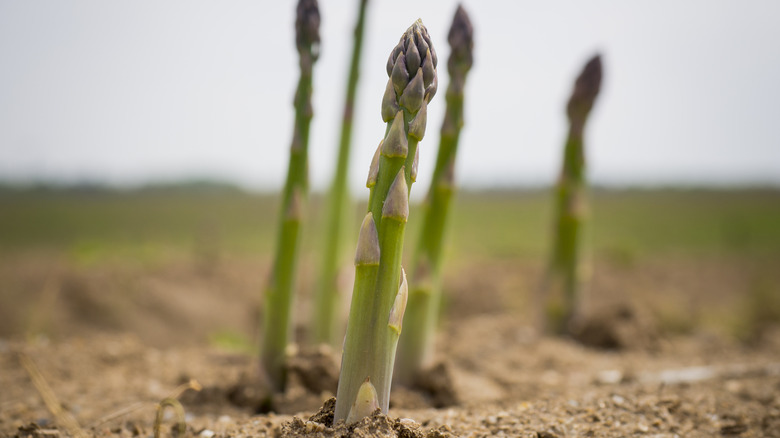Food And Drinks You'll Want To Stop Buying After You Learn How They're Made
We've all been working around the clock trying to make something of our lives, with an intensity that's taking a toll on us and the environment. The trade-off of modern society becomes unmistakably clear as soon as we follow the trail of our food supply chain. Every steak we grill, and every banana we peel has a story to tell that can make us uncomfortable. However, as we grow and continue to expand as a civilization, it's now on each of us to understand the impact we make on distant communities around the world with each dollar we spend at the grocery store.
Simple changes in our diet lead to significant changes in our sustainability record. But where do we start? With the meat and dairy industries definitely getting enough media coverage, we sometimes may miss the actual magnitude of the problem. From Californian almonds ripping off vital water resources to cramped chickens in their tiny forever homes, the list of foods in the red is much longer than we would like it to be.
Palm oil
You will find palm oil in half of all packaged goods, including your favorite cookies or chocolate spread. While it is highly valued for its unique properties, such as its ability to remain semi-solid at room temperature or its stability at high temperatures (ideal for deep frying), the negative consequences of palm tree plantations are evident. Sadly, efforts to address this issue are not progressing quickly enough.
Palm oil production in Malaysia accounts for a staggering 85% of global output. However, this has had dire consequences, destroying vital forests and endangering precious species. Additionally, palm oil plantations contribute significantly to releasing greenhouse gases, not to mention the concerns about worker exploitation and child labor linked to the industry. Although some progress has been made in Europe and North America towards sustainable palm oil consumption, challenges remain in Asian markets where palm oil is primarily used for cooking oil.
Beef
People get pretty fired up whenever a beef topic is mentioned. While Healthline reports that most of us will not see significant health effects from eating red meat, beef production's impact on our environment is undeniable. As our craving for beef grows stronger, so does the harm being done to our planet.
Producing beef requires significant resources, including land, water, and feed, meaning vast areas of forests are often cleared to make room for grazing or to cultivate animal feed crops like soybeans and corn. This deforestation has a detrimental impact on delicate ecosystems and results in habitat loss. Shockingly, beef farming alone is responsible for 7% of global emissions. And when we add ethical concerns from the intensive confinement and often cruel conditions that cattle endure, the scale tips towards consuming less of it.
Soybeans
Soybean cultivation plays a crucial role in the search for meat and dairy alternatives. Unfortunately, this expansion has come at a high cost, as tropical forests have been devastated, resulting in the loss of around 300 million hectares globally in the last two decades alone. In Brazil, the amount of land dedicated to soy production has skyrocketed from just 704 hectares in 1940 to a shocking 20.5 million hectares.
The Round Table of Responsible Soya Association was formed to combat this issue, which brings together major stakeholders, including Unilever, Monsanto, and Carrefour, to develop sustainable soybean expansion strategies that prioritize protecting ecosystems, biodiversity, and land rights. Regardless, UK Soil Association is skeptical about the initiative's progress. The best way to make a difference is to opt for organic or GM-free soy not sourced from rainforest regions and grown through crop-rotation systems.
Farmed shrimp
It's becoming less of a secret that shrimp farming has negative environmental consequences as it destroys essential ecosystems such as mangrove forests and coastlines that provide habitats for many species. The damage isn't only limited to the farms but also to the surrounding habitats like tidal basins, mudflats, estuaries, salt flats, and coastal marshes.
To make matters worse, antibiotics used in many of these farms promote the development of antibiotic-resistant bacteria that can harm human health. Meanwhile, agricultural pesticides and chemicals pollute nearby water sources, including groundwater and coastal estuaries. Although tropical climates in countries like Africa are ideal for rapid shrimp growth, intensive farming generates enormous waste and chemicals that contaminate water sources. Disease outbreaks in shrimp farms can quickly spread, resulting in significant economic losses and unemployment.
Coffee
Over the past three decades, the demand for coffee has soared by 60%, causing devastating environmental effects such as deforestation in Brazil, the world's largest coffee producer. The coffee industry also consumes a great deal of water and energy, with 140 liters of water required to produce a mere 125 millimeters of coffee. Climate change has only worsened the situation, leading to a surge in Arabica coffee prices due to droughts and frost in Brazil.
It's crucial to address the long-term sustainability of coffee production and the livelihoods of millions of farmers living below the poverty line. Some companies like Compound Foods are taking an innovative approach by using fermentation processes to create coffee flavors and aromas in a lab without traditional cultivation methods. However, there is still more work to be done in this area.
Corn
It's hard to imagine a life without corn — it's a staple that we all know and love, from the grilled corn on the cob to our favorite popcorn. However, the corn industry has grown exponentially, leaving a massive ecological footprint. Monoculture practices and the industry's overreliance on chemical fertilizers have contributed to numerous socio-environmental issues.
One of the most alarming effects of corn production is air pollution. In the United States, where corn is the most significant agricultural crop, it releases a massive amount of toxic particles into the air. The use of synthetic fertilizers, the operation of tractors, and the cultivation of land all generate air pollutants that pose a risk to human health. This widespread air pollution is linked to respiratory illnesses and even premature deaths.
Salmon
While many consumers view farmed salmon as a sustainable and natural product, the reality is that this industry is causing considerable harm to marine ecosystems. In fact, the global economy lost an estimated $50 billion from 2013 to 2019 due to pollution, parasites, and high fish mortality rates associated with salmon farming.
Farmed salmon are bred in overcrowded cages, which leads to parasite infestations and diseases. Additionally, they are fed pellets made from fishmeal, vegetables, and animal byproducts, and they are frequently exposed to pesticides and antibiotics. As a result, scientists have raised concerns about the safety of farmed salmon, as they tend to contain high levels of contaminants such as polychlorinated biphenyls (PCBs) and antibiotics. This poses a particular risk to vulnerable groups like infants, children, and pregnant women.
Cacao
Chocolate is undoubtedly indulging, as is an amazing chocolate cake. But with each bite, there comes a cost. Despite cacao being a vital cash crop, many cacao farmers in the region struggle to earn a decent livelihood. Organizations like the Rainforest Alliance and Fairtrade certify cacao farming to increase biodiversity and minimize agrochemical usage, but only a tiny fraction of chocolate products are made with certified cacao.
West Africa, particularly countries like Cote d'Ivoire and Ghana, is the world's central hub for cocoa cultivation. Sadly, the increased cacao production has led to extensive deforestation in these areas. A jaw-dropping 70% of illegal deforestation in Cote d'Ivoire is linked to cacao farming. On top of environmental implications, cacao farming raises social challenges, such as rampant child labor in West African cacao farms. An estimated 2 million children are still involved in dangerous work annually.
Sugar
Sugar cane is a highly sought-after commodity that occupies a vast expanse of land across the globe. Covering over 60 million acres, it has replaced once-thriving tropical forests. Brazil, now the biggest sugar cane exporter globally, made way for plantations by clearing the valuable Atlantic Forest. Similar destruction has been observed in other parts of the world, such as the Everglades in Florida and the waters around the Great Barrier Reef in Australia, which have been adversely impacted by sugar production.
The impacts of sugar cane are strikingly similar to the palm oil industry. They both require extensive deforestation, destroying entire rainforests and their unique ecosystems. On top of that, sugar plantations also pollute the air with leaf burning and need to be cleared annually, leading to floods and soil erosion. This is extremely harmful to the environment and always means a significant loss of biodiversity.
Tuna
Bluefin tuna is yet another widely consumed delicacy facing severe sustainability concerns. While farmed bluefin tuna may seem like a viable alternative to wild-caught tuna, there's more to the story than it seems. In fact, the WWF Seafood Guide has deemed both farmed and wild-caught bluefin tuna unsustainable.
Tuna is a carnivorous fish and requires a staggering 15 tons of feed for every tonne of farmed bluefin tuna. These numbers are significantly higher than farmed salmon or trout. This dubious inefficiency clearly puts farmed bluefin tuna on the blacklist. Many farmers are increasing the size of their bluefin tuna to meet the high demand and profitable market. They achieve this by feeding the fish sardine, sand eel, and cuttlefish. Still, that's nowhere near as sustainable as yellowfin tuna caught with selective handline fishing in Indonesia and the Philippines.
Eggs
Eggs are a seemingly harmless staple food, however, a closer look at conventional egg production is frightening. The truth is that the replacement cages for the phased-out battery cages are only marginally more extensive, offering a very small improvement in the well-being of the caged hens. Meanwhile, the so-called "free range" eggs are laid by the hens living in sheds, confined with eight other birds within a square meter. Even if these birds can access the outdoors, they can barely find the little exit holes.
The intense production demands further exacerbated the misery and distress these birds have to go through. While wild hens lay around 20 eggs annually, modern farming practices push them to produce close to 500 eggs annually through high protein feed and constant lighting; only to have their exhausted bodies discarded after just a few months.
Avocados
Ever since avocados were introduced into Europe, they have become synonymous with a healthy lifestyle. However, lately, the reputation of avocado toast as a sustainable and nutritious food option has been heavily scrutinized. The surging global demand for avocados caused a sharp price rise, adversely affecting indigenous communities who have long relied on this healthy fruit. It has hit Mexico the most, which has been the largest producer globally since the lift of the ban by the U.S. Sadly, it acted as a double-edged sword, drastically affecting the U.S. domestic sector and dwindling food security in Mexico.
Water scarcity is also a big issue since avocado farming requires considerable amounts, depriving local communities of this valuable resource. And the worst part? Mexican drug cartels routinely extort hard-working avocado farmers, forcing them to take costly security measures or give up their businesses altogether.
Pork
There are nearly one billion pigs raised on farms around the world. Sadly, in the United States, 97% of pigs are kept in factory farms confined to industrial floors and never get to go outside. This can result in poor air quality and severe health issues for the pigs. In Denmark, known for its very productive pork farms, extreme breeding practices have resulted in approximately 500,000 sows being disposed of annually. This is due to declining fertility, poor maternal characteristics, age, sickness, and injuries. While this may increase productivity, ethically, it seems skewed.
Raising pigs also comes with significant environmental costs. Ammonia emissions from pig farms can hurt natural habitats, while nitrogen loading can affect wetlands and coastal waters. Moreover, pig farming contributes to the rise of CO2 levels, and the odor emanating from large-scale production facilities can be unpleasant for those living in the surrounding areas.
Pineapples
The global demand for piña colada has shifted from small-scale pineapple farming to large-scale monocropping. Countries like Costa Rica, where pineapple is the primary food export, face various environmental issues, from water grabbing to loss of biodiversity. The pineapple industry relies heavily on water from nearby rivers for irrigation, significantly affecting the quantity and quality of these resources. Moreover, the pesticides used in this industry, such as nematicides and insecticides, contribute to wildlife depletion. Trees that depend on insect pollination are experiencing a decline in fruit production, ultimately affecting the food security of the locals.
The continued use of hazardous pesticides contradicts Costa Rica's efforts to promote sustainable tourism and tarnishes its reputation as a sustainable destination. Surprisingly, Costa Rica has one of the highest pesticide usage rates globally, a stark contrast to the environmentally friendly image the country is trying to establish.
Cheese
Each year dairy production significantly contributes to greenhouse gas emissions, with nearly 95 billion pounds of emissions being released into the atmosphere. While it is sad to admit cheese, too, adds heavily to climate change. And while data vary between producers and the cheese types, some cheeses require up to 11 liters of fresh milk to produce just one kilogram of cheese.
The more cheese, the more land farmers need for their cows and this leads to deforestation and complete land degradation. The dairy sector is recognized as one of the most impactful agricultural activities, contributing to greenhouse gas emissions. But problems don't end there; cheesemaking also touches upon feed production, mainly soybean, which is linked to a whole new world of environmental issues. On the positive side, young, soft cheeses have a much smaller ecological impact.
Bananas
Bananas hold the crown as the world's most favorite fruit and they are also the most exported fruit globally, making up approximately 75% of the tropical fruit trade. While delivering ripe bananas to stores is remarkably intricate and requires high-tech solutions, the reality at the farms isn't as pretty.
The conditions and treatment of workers on many plantations remain deplorable. Efforts have been made to impose ethical certification processes on banana suppliers, but reports from Ecuadorian plantations highlight severe weaknesses in the schemes. Workers are subjected to toxic pesticides without proper protection, violating regulations and certification requirements. According to workers, the improvements are often temporary and staged for inspectors' visits.
The situation in Guatemala isn't much better. Workers do not receive fair compensation. Large companies such as Dole and Bonita pay workers as little as $13 per day without providing benefits, on top of already terrible working conditions.
Chicken
Poultry production is a highly efficient means of providing nutrition to the world. However, if not managed effectively, it poses environmental risks. The byproducts generated, such as poultry litter and manure, can compromise the quality of air, water, and soil and contribute to greenhouse gas release.
Intensive poultry farming can also affect the health of workers and consumers. Dust from poultry production contains harmful pollutants that sometimes reach nearby communities, while antibiotics used at farms can lead to antimicrobial resistance — a serious concern to public health. The consequences of the poultry industry are not limited to the environment, as there are concerns about labor exploitation and high injury rates in slaughter and processing lines.
Rice
Rice is a vital crop, particularly in Asia, where it is absolutely essential for sustaining the population. However, concerns about sustainability have surfaced due to the use of fertilizers and pesticides and the amount of water rice cultivation requires. One of the main challenges associated with rice farming revolves around its heavy dependence on water. Cultivating just one kilogram of rice demands a staggering 2,000 to 5,000 liters of water, making it highly susceptible to droughts. Moreover, the flooding technique employed in rice paddies contributes to methane emissions and water pollution, as the soil lacks sufficient oxygen penetration.
The issue of water management in rice cultivation may grow increasingly complex, given the repercussions of climate change, such as more frequent droughts and water scarcity. Farmers must reassess their rice-growing strategies to adapt to future scenarios where water availability becomes even more limited.
Lamb
The seemingly harmless sheep have a not-so-innocent effect on the environment. Thanks to their large appetite, they release a lot of methane into the atmosphere as they digest their food. In fact, in Australia, where there are over 70 million sheep, each releases about 30 liters of methane daily. That's a lot of greenhouse gases. And it's not just Australia — sheep are responsible for more than 90% of the country's total methane emissions in New Zealand.
Sheep waste can also lead to excessive plant growth in water systems due to runoff from sheep waste, causing low oxygen levels that harm aquatic animals. Finally, sheep farmers use pesticides and insecticides to control parasites. According to Medical News Today, some very dangerous chemicals, like organophosphates, used for sheep dipping have been linked to severe health problems.
Pine nuts
China is the world's leading exporter of pine nuts, with a significant amount of them being sent to Europe and U.S. However, due to the wild nature of pine nut harvesting, the supply chain faces inherent challenges: pines are masting trees, so harvest, and location vary wildly by year. This hard-to-follow cycle poses a significant hurdle in meeting the soaring demand for this buttery nut. Unfortunately, the Western appetite for pine nuts has already taken its toll on broadleaf forests in East Asia, raising alarming concerns about the environmental consequences of the unsustainable harvesting of conifer trees.
While pine nuts constitute a mere 1% of global tree nut production and primarily impact local ecosystems, sustainability concerns arise from the carbon footprint associated with long-distance shipping. One great solution is to support local producers and prioritize locally sourced, unshelled pine nuts as a more sustainable alternative to their imported counterparts.
Almonds
Healthy eating trends have led to an incredible surge in almond consumption, but this presents a significant challenge for California's sun-kissed orchards. Most of the world's almonds are grown in this drought-stricken region, and the water demands of the multibillion-dollar industry are staggering. It takes a whopping three and a half liters of water to produce just one almond, making it the most water-intensive alternative to dairy products.
There are two times more almond orchards in California than it was a couple of decades ago, causing rivers to be redirected toward almond farms and further declining endangered fish populations. Furthermore, the depletion of the oldest of California's underground water aquifers is occurring at an alarming rate. The use of pesticides in the almond industry is also problematic for bees. Even though large bee colonies are brought in for pollination, they are often exposed to these chemicals and suffer many casualties.
Strawberries
Having access to strawberries all year round is a wonderful thing. Sadly, the industry has grown too reliant on hazardous chemicals like soil fumigants, which are now subjected to strict regulations. California is a prime example of this. Strawberries are California's sixth most valuable commodity, but many of the state's strawberry farms hide a darker truth. These farms are notorious for paying low wages, keeping inadequate working conditions, and using excessive pesticides.
Fumigants maintain high productivity and uninterrupted production on the same land. However, this presents a challenge when transitioning to more sustainable methods. Due to the high land cost, many growers hesitate to adopt less intensive practices. Only a handful of small farmers have employed minor crop diversification or located land in less expensive areas. This, unfortunately, means that the dream of affordable and clean year-round strawberries remains elusive.
Wine
When savoring wine, it's essential to recognize the environmental impact of wine production. In Sweden, for instance, wine production alone is responsible for 61% of the country's greenhouse gas emissions. As the harvest season approaches, wineries require a tremendous amount of electricity to ensure optimal conditions for cooling the grapes and must. Although, the ecological footprint of wine goes beyond just the vineyards.
Using glass bottles in the supply chain leads to significant greenhouse gas emissions due to the energy-intensive production and cleaning procedures. Additionally, the weight and fragility of glass bottles further hinder transportation efficiency, making the issue even worse. Ironically, even organic winemakers are not immune to the issue. Buying organic wine from a large manufacturer may be riskier than purchasing wine from a small winemaker that uses synthetic pesticides. This is because organic producers rely heavily on natural pesticides, which can be just as harmful when used excessively.
Palm hearts
For long, hearts of palm have been a staple in South American and Southeast Asian cuisine. This unique ingredient is extracted from the inner core of palm trees. It's grown increasingly popular in the U.S. and Europe, although the French seem to love it most. It definitely has culinary potential, especially when used as a seafood alternative.
While it is possible to grow hearts of palm sustainably, it depends on the type of palm tree. Some, like peach and acai palms, have multiple stalks and can be harvested responsibly without damaging the tree. However, a tree with only one stem, like a coconut palm, will be killed during harvesting. Although regulations exist in many regions to protect palm populations, illegal palm harvesting is still a significant problem, especially in countries like Brazil. So, if you're ever curious to try a palm hearts ceviche, check for a label indicating they were sustainably sourced first.
Blueberries
Peru has emerged as the world's largest exporter of blueberries and is now grappling with sustainability challenges. Increased demand has led to labor shortages and water supply issues. In Europe, the situation is worse. Intensive berry cultivation in the Iberian Peninsula, particularly in southern Spain and Portugal, is causing significant damage to water resources.
This unsustainable practice is driven by market demand, and lucrative profits pose a grave danger to natural parks like Doñana in Spain or Alentejo and Vicentine Coast Natural Park in Portugal. The worst part is that the intensive blueberry cultivation model depends heavily on migrant workers who experience exploitation and unstable living conditions. Often they work very long hours, receive low wages, and are exposed to harmful agrochemicals without proper protection.
Quinoa
With the ever-increasing popularity of quinoa as a super grain worldwide, farmers in Bolivia and Peru have undoubtedly benefited from new economic opportunities. However, this newfound commodity status has significantly cost the environment and society, leading to land-related issues and environmental degradation.
Farmers face a tough challenge as they strive to meet the demand for more crops. They've already expanded their fields to new areas, only to face land erosion. To make matters worse, fewer llama herds are around to provide vital fertilizers. As a result, the locals have had to switch to cheaper, less nutritious foods like white rice due to the rising cost of quinoa. The good news is that there have been successful experiments in growing quinoa outside the Andean region. Europe and Asia have showcased good yields, but much work must be done before the quinoa industry can become sustainable.
Tea
With global tea consumption reaching a staggering 7.3 million tonnes in 2022, the industry continues to tackle the ethical concerns that have hindered its progress toward sustainability. Issues like unnecessary waste, depletion of natural resources, and unethical work practices have all emerged as major concerns.
Despite the significant efforts made by certification bodies to address ethical concerns, the tea industry continues to impact the lives of millions of people in tea-producing countries. The industry's labor force often faces low wages since their income is solely based on the weight of the tea leaves they collect. Irrespective of the brand, most tea leaves are sold at auctions, where the final bid ultimately determines the workers' pay. To combat this issue, smaller tea brands prioritizing sustainability and workers' rights seek to eliminate intermediaries and ensure fair wages for the tea pickers.
Asparagus
Despite being a delicate vegetable, asparagus carries an astonishingly high carbon footprint. In fact, a study published in the Journal of Industrial Ecology in 2014 revealed that asparagus isn't innocent at all. The carbon emissions produced by asparagus far exceed those of any other vegetable, even outpacing chicken and milk.
Transporting delicate fruits and veggies like asparagus by air freight may seem like a quick solution, but it comes at a high environmental price; air transport requires more energy and creates more greenhouse emissions than shipping, road, or rail. When we buy produce flown in from faraway places like Asia, Africa, or South America, we might be helping out farmers, but we're not doing the environment any favors. And there's no good way to determine whether a product was transported by air, which is unfortunate.

